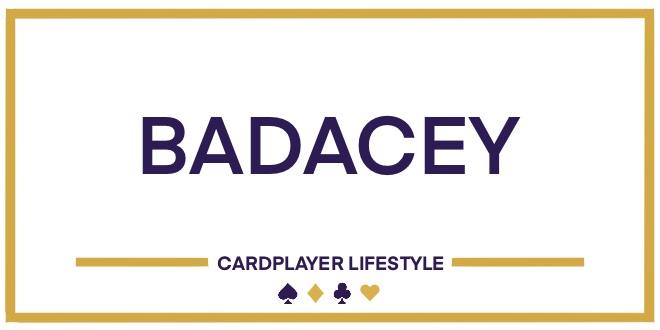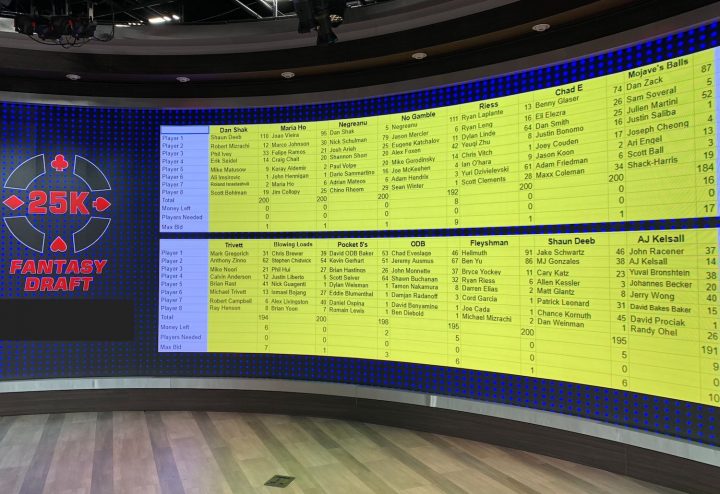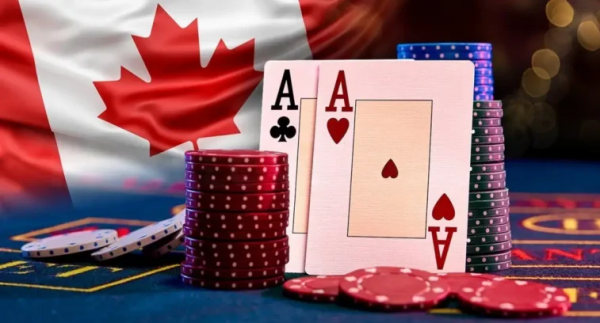As poker players, we were all likely introduced to card games of some form as kids — Go Fish, Crazy Eights, and Uno to name a few — and they all had something in common: there were no solvers available for them!
Kidding aside, one trait most kids card games do share is the fact that discarding and drawing play a big role. Several of the best poker games today share these traits as well.
“Got any 4’s?” “Nope, go fish!”
Got 4 cards to a wheel in 2-7 Triple Draw? Go fish!
Draw games are some of the most fun poker variants you’ll find in a mixed game, so let’s go through them and get you ready to relive the excitement of drawing from the ol’ Uno deck.
In this section of our Mixed Games Poker Guide, we’ll be covering the classic variants of 2-7 Triple Draw, A-5 Triple Draw, 5-Card Draw, and Badugi, as well as some variations that have evolved in the wider mixed games collective like Badacey, Badeucey, and Archie.

Also, be sure to check out our other Mixed Games Poker Guide articles on Flop Games and Stud Games.
THE CLASSICS
Limit 2-7 Triple Draw
Let’s start with the most popular and common version of draw, and also one of the most popular games overall in a mix, as it is action packed and can play significantly bigger than other games in the rotation (especially when played as pot limit or in rare appearances no limit, but for our purposes here, we’ll focus on limit).
In 2-7 Triple Draw, the goal is to make the best five-card low hand without making a straight or flush (aces play high), so 23457 (known as a wheel or number 1) is the best possible hand.
Players are dealt five cards face-down with a button and two blinds in play. Pre-draw betting begins to the left of the blinds, as in flop games, where players can fold, call, or raise. At the completion of betting, players must then decide which of their cards to discard and subsequently draw new cards in hopes of improving their hand, beginning with the blinds.
Action continues with two more rounds of betting and drawing, followed by a final round of betting, with the lowest hand following the third draw declared the winner. At any point in the hand, a player can ‘stand pat’ and no longer draw if they feel their hand needs no further improvement (or if they wish to ‘snow’, or bluff).
As mentioned, this version of the game is played with a limit betting structure, so in a $10-20 game, the betting increments pre-draw and after the first draw are $10. After the second and third draw, they increase to $20.
Limit 2-7 Triple Draw Tip: Don’t leave home without a deuce
There is a lot of strategy involved in playing Triple Draw well, and many ways you can get in trouble in a hand. Check out the Learning Resources section of our Mixed Games Poker Guide for a deeper dive into this and all the mixed games we discuss.
As with all poker games, starting hand selection is a large part of playing Triple Draw well, and arguably the most important and powerful starting card to hold in any poker game is the deuce in 2-7 Triple Draw. Without it, you literally can not make one of the strongest possible hands. The best hand you can make is 86543, which is the 9th best possible hand. You can also run into more possibilities of making straights, and if you don’t have a deuce, your opponents likely do, which will make drawing to a deuce more difficult if that’s what you’re hoping to do.
If you are dealt a pat 8 to begin with, you should keep it and play it aggressively as opposed to breaking (discarding) and drawing to a 7, but if you don’t have that deuce when you are drawing, you’ll be making life more difficult than it should be.

Limit A-5 Triple Draw
Though a much rarer variant in the realm of draw games, A-5 triple draw is nearly identical to its 2-7 cousin, with identical deal, betting and drawing structures. However, hand strengths are the key difference, as straights and flushes no longer count against you, so A2345 is now the best possible hand (hence the name).
As such, strategies change significantly with seemingly more possibilities to make hands, and one card (the deuce), not having the power it did when straights counted against you.
Limit A-5 Triple Draw Tip: Pat 8’s ain’t what they used to be
As mentioned earlier, in 2-7 Triple Draw, a pat 8 is a decently strong starting hand, and should be patted and played aggressively. However, in A-5, with a 7 no longer being the lowest possible made hand, the value of a pat 8 diminishes significantly. There are many more opportunities to break your hand and draw to improve.
For example, if you are dealt 8642A to start, you’re better off discarding the 8 and drawing to improve. You have three draws to catch a 3 or 5 to make a very strong 6, or you could catch a 7 to improve to a ‘pattable’ 7642A. Once you’ve made a 7, it’s usually best to pat it and play aggressively against opponents still drawing to force them to pay to outdraw you.
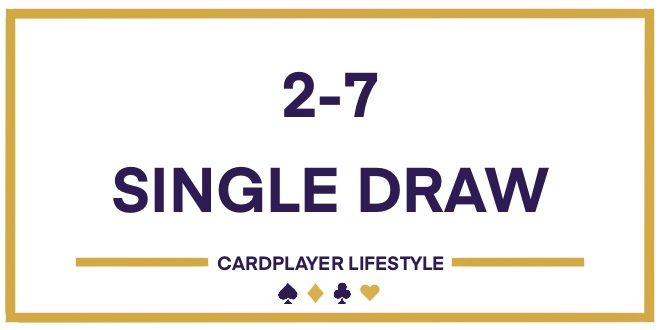
No Limit 2-7 Single Draw
No Limit 2-7 (a.k.a., “Kansas City Lowball”) is seen by many poker players as the most ‘true’ form of poker. A hand is dealt identically to the triple draw games above (straights and flushes count against you, too, as in 2-7 triple draw), but two big changes make the game drastically different, and they’re right there in the name of the game: No limit betting, and one draw.
With only two betting rounds (pre- and post-draw), the amount of information a player can gather from their opponent is very limited. You get information from their pre-draw action, the number of cards they draw, and their post-draw action. That’s it. Oh, and one more thing…
Live. Reads.
Hence why this variant is seen as such a pure form of poker. In the live version of the game, there may be no other variant where knowing your opponent and picking up a live tell is as important. Looking your opponent in the eye and determining whether they’ve got it or not is a big part of No Limit Deuce, and its why you’ll see the best players in the world succeeding at the game.
There are online games available, and they are fun (ultimately NL 2-7 is just a really fun game), but they’re just not the same without the live element of reading your opponent.
Don’t be afraid though if you’re reading skills aren’t among the elite. Bet sizing, timing tells, and pot odds all still huge elements of being a successful NL 2-7 player. And did I mention it’s a lot of fun?
No Limit 2-7 Single Draw Tip: A pat Jack is a favorite over any 1 card draw
When it comes to poker strategy, there is a lot to such a simple game. With only the one draw, hand strengths change drastically from triple draw games. Knowing your opponents and their hand ranges is key, but one rule stands above all others and it’s pretty simple: A pat Jack is a favorite over ANY 1 card draw.
The pat Jack is the line. No matter how strong your opponent is drawing, the fact that they’re drawing makes their hand inferior. If you have the roughest Jack possible (JT986), it’s still a favorite to win against even the strongest of one card draws.
Position is as always a huge positive, but in a situation where you may have played your made Jack aggressively and gone to the draw against an opponent who is out of position, you’ll know exactly what to do against them.

5-Card Draw
Prior to the poker boom, if there was a draw poker game you grew up playing, it was likely 5-Card Draw. Nowadays, the game is virtually impossible to find save for mixed cash games, WSOP Dealers Choice or Big Bet Mix events, and a spattering of online offerings.
Action is dealt identically to the above games, however in this game you want to make the best hand, using the standard rank of hands. 5-Card Draw can be played as a limit triple draw game, but is best and most commonly played as either a pot limit or no limit game with one draw.
5-Card Draw Tip: Know your draws
Deception is not as prominent a part of 5-Card Draw as it can be with other draw games, which is frankly a large part of its lack of popularity. It’s really a pretty simple game. Both your and your opponents pre-draw hand strength will be quite apparent to observant players, and as such, you’ll need to be observant to how both they and you draw.
A player drawing one card obviously has either two pair, four to the straight or flush, or in very rare cases, four-of-a-kind.
If drawing two, an opponent has either three-of-a-kind, a pair with a high card (not recommended – draw three when holding a pair for the best chance at making three-of-a-kind), or in some cases a two-card draw to a straight or flush (just don’t).
Three-card draws are almost always a pair unless a player in the blinds gets the opportunity to draw cheaply with two high cards.
Four- and five-card draws you should only see from the big blind. If you notice a player acting otherwise, don’t let them leave the game!
Badugi
Badugi is one of the most unique draw games and, as you’ll see shortly, the perfect addition to some of the exciting split-pot draw game variations coming up! It is played as a lowball game where the lowest four-card hand wins, but in this game, you also must try to make your hand unsuited (known as a Badugi), so A234 of all four suits is the best possible hand (straights do not count against you but flushes obviously do).
The game is dealt similarly to the above games, with a button and two blinds, but players are dealt only four cards face-down before any of the drawing rounds. Badugi is played as a triple draw game, but can be played limit, pot limit or no limit, with limit and pot limit the most common.
As with the other triple draw games, there is a round of betting before the first draw and after each of the three draws, before a winner is declared at showdown unless all other players fold.
The goal is ultimately to make a Badugi (any Badugi, even KQJT beats an incomplete Badugi), but in many cases that doesn’t happen, in which case the lowest three-card incomplete Badugi hand wins at showdown. For example, Ah2d3s3d would be the nut 3-card Badugi (the 3d does not play), and beats any other incomplete hand, which leads us to our strategy tip…
Badugi Tip: Start from the bottom and work your way up
As it is not a given that you’ll make a Badugi once the three draws have been completed, having the potential of a superior three-card hand as a backup versus an opponent also drawing is key.
For example, if your opponent starts with Td 2s Ah 6h, the lowest possible Badugi they can make on one draw is a 10, if they discard the 6h. Conceivably they could draw a low club, say 4c and have the option to break the 10 and draw to the 4 (if there are more draws to come), but Badugis are hard to make, so it’s better to just make a good one in the first place by starting with multiple low cards, than be starting by trying to make a bad or marginal Badugi.
If you start with say 5c 4h 2d Kd, sure you could draw the Ks giving you a bad Badugi, but you’re also live to multiple low spades that could give you a nearly unbeatable Badugi.
Also, playing in position is huge in Badugi. If you do make an ugly Badugi, at least you have the option in position to pat it if your opponent draws in front of you, knowing that at least it is ahead. If you’re out of position with a marginal Badugi, you’ll be hard pressed to know if it’s good vs. a late position opponent patting.
THE VARIANTS
Badacey / Badeucey
What’s better than playing a draw game? Playing two of them simultaneously in a split-pot game! Badacey and Badeucey are a little tough to find if you’re not near a casino that spreads a regular mixed game, as there are no online offerings of it, but if you can find one, jump in and make sure the Badacey and Baduecey plaques are in the mix because they’re both great games, with a lot of similarities, but enough differences to give each its individual flair.
Both are spread as 5-card triple draw games, usually limit, and usually capped at 6-handed because of the number of cards in play and discarded.
The key differences are that Badacey is played as a Badugi / A-5 split, while Baduecey is a Badugi / 2-7 split. Strategies vary accordingly as, along with the best 4-card Badugi hand, players will be trying to also make the best 5-card A-5 or 2-7 hand to scoop both halves of the pot. In Badacey, since straights do not count against you with A-5 rules, a standard A234 Badugi would be the best possible. However, in Baduecey, aces play high and straights count against you as with 2-7 rules, so 2345 would be the best possible Badugi.
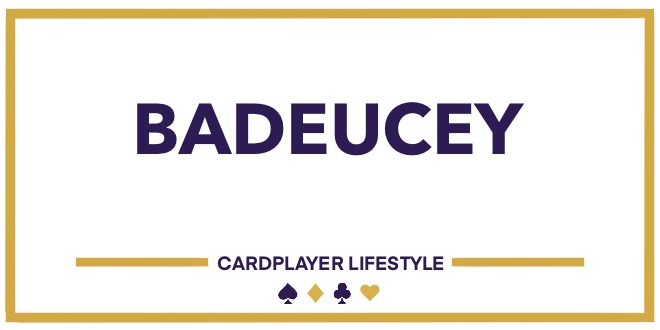
Badacey / Baduecey Tip: How low should you go?
Let’s start with what you should look for in a Badugi hand. As we discussed in our Badugi section above, it’s better to start as low as possible when drawing to a Badugi. This is doubly important in these games as, since you will be dealt five cards instead of four, a quality Badugi will be easier to make. Therefore it is critical if you aim to scoop both sides of the pot that you take advantage of this fact, and start with at least three low cards that can make both a premium Badugi hand AND a A-5 or 2-7 hand. Start with the basis for a good Badugi that can also easily improve to at least a decent lowball hand as well, whether it’s A-5 or 2-7.
As for how low you should go? A decent guideline is to aim for a 7 Badugi and a 7 low A-5 hand in Badacey. In Baduecey, you can try to go a little higher aiming for a 7 or 8 Badugi, with an 8 low 2-7 being strong. That said, depending on how your opponents play, you can loosen these standards if you see them regularly showing down higher hands than these.
Bonus Tip: Hammer your dealt pat hands or keep it super friendly
Sometimes you will be dealt an extremely strong one-way hand that is the virtual nuts for half the pot but needs improvement for the other half (e.g., 7h5h4h3h2c in Baduecey. You have a wheel which can not be beat, but only two usable Badugi cards). In these cases, pat your hand and either: A) Do your best to thin the field to scoop by forcing your opponents all to fold, or B) in a super loose splashy game, build the pot as best you can while freerolling multiple opponents to showdown, and make a decent profit from your half of the pot. On rare occasions you may get quartered if an opponent also makes a wheel, but quarterings are far less frequent in these games than in Omaha 8 or Better.
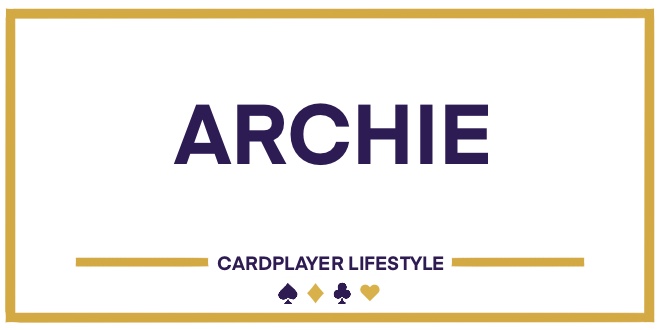
Archie
Archie is one of the rarest and most complex draw games, though it has grown in popularity on the Las Vegas mixed game scene for just that reason. It’s a lot of fun, but it can be a complex game with a lot of nuance and definitely favors more experienced mixed game players. So, if you’re new to this game, be careful as there can be a lot of seemingly enticing situations that can get you in trouble.
Archie is basically 5-card triple draw high/low split with qualifiers. Half the pot goes to the highest hand, half goes to the lowest A-5 hand. Of note, you must qualify your hand to be eligible for any part of the pot. For a qualifying low hand, you must make an 8 low or better. For a qualifying high hand, you must make either a pair of 6’s or a pair of 9’s (rules vary from room to room).
If there is no qualifying low hand at showdown, the entire pot is awarded to the highest hand. If there is no qualifying high hand, the pot is scooped by the lowest hand.
Quite often the pot will be split, as players will often be dealt strong one-way hands or draws and play solely for that half of the pot in a multiway situation. As with any split pot game though, our goal is to scoop the whole pot yourself! It will be tough to do that, but here’s a tip on how to do just that!
Archie Tip: Low hands with high potential are premiums for a scoop, or at least a strong chance at half
Barring a rare occasion where you are just dealt the nuts both ways, you’ll likely need to improve in some aspect to scoop a pot. Four low straight cards or four low suited cards are the premiums in this aspect.
If you are dealt 2356J, for example, you’ll be discarding the Jack and drawing one with plenty of opportunity to make either a strong low with an ace, 7 or 8 (which will likely win you half the pot), or there are those four 4’s out there that could scoop you the entire pot.
Four low suited cards are a similarly huge starter with possibilities to make a strong high (with a 9 or higher flush) a strong low (with an offsuit non-pairing card that gives you five cards 8 or lower), or a potential scooper (with a fifth flush card 8 or lower).
As mentioned in the Badacey /Baduecey section above, once you’ve made a hand, it’s up to you to determine whether you want to protect your hand and/or fold out opponents by raising aggressively, or building the pot by keeping others in if you’re resigned to playing for half.


